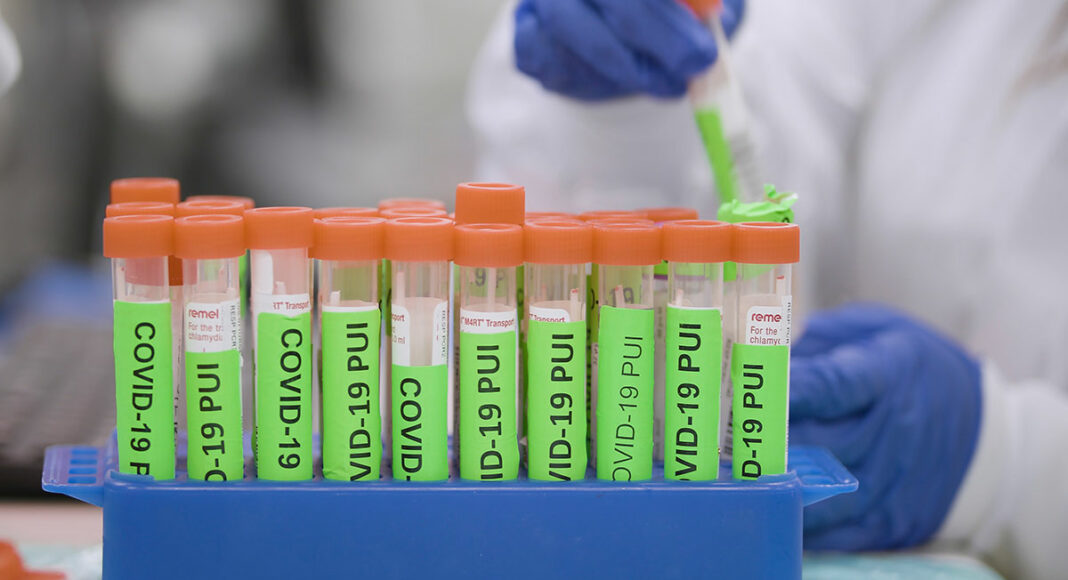In Santa Cruz County, the beginning of June means the beginning of a new phase in the recovery from the Covid-19 pandemic.
Over the weekend, the county’s plan for moving forward was approved by the California Department of Public Health. That means county health officials are this week concentrating on efforts not only to reopen the local economy and help local businesses comply with the state’s guidelines, but also to initiate an ambitious plan for testing and contact tracing.
Margaret Lapiz, who was enlisted in April to head the SAVE Lives Santa Cruz County program, says the county has about 55 people trained and ready to go in its contact tracing program, which is well above the minimum number needed for effective tracing.
“We have a robust plan for contact tracing that is well underway,” says Lapiz, a longtime health care executive hired by the Community Foundation, which is funding the SAVE Lives effort. “But what we need to do is to ramp it up dramatically.”
Contact tracing is epidemiological detective work, a method to isolate a node or outbreak of an infection and trace it back to its source.
Professionals with backgrounds in health care have been put through a vetting and training program to engage in both contact tracing and case investigation. “This is generally expertise that has been in the domain of public health departments for a variety of communicable diseases: HIV, STDs, when we went through the H1N1 (pandemic),” Lapiz says.
Lapiz says that the program has brought in roughly half of its contact tracers from the staff of the county’s health department, and half from community groups such as Salud Para La Gente in Watsonville and Santa Cruz Community Health Centers. “We’ve had conversations with Cabrillo College to use their students in a number of their health-care disciplines. We want to make sure that we have a diverse group of contact tracers: first-in-family students, bilingual and bicultural teams.”
The program is also enlisting the efforts of promotores, lay people and volunteers with a tradition of providing health-care information and guidelines in Latino communities.
Though Lapiz is pleased with the force she and her team have compiled, she says she does not want to discourage others from volunteering. “We have other ways to deploy volunteers who we could capitalize on for expertise and availability. But we are well-positioned right now for contact tracing.”
Jen Herrera, the county’s chief of Public Health, says that contact tracing is a vital step in the control of the spread of Covid-19. The county automatically gets the result of every Covid-19 test—positive, negative or inconclusive—and from that one data point, tracers can launch an investigation.
“Once we get notified of a positive result, that immediately starts our investigation,” Herrera says. “We’ll contact the positive case and initiate the investigation within 24 hours. From there, we determine if there are contacts that need to be contacted. Our goal, our charge, is to follow up on every single positive case in the county. We have a high bar for having enough contact tracers to do containment in our community.”
According to data last updated Tuesday, June 2, 41 new cases of Covid-19 have been recorded in the county in the previous 14 days, with 219 total cases since the outbreak began. There have been no deaths in the last 14 days in the county.
In late May, four clusters of positive cases were reported in Watsonville, which were traced to large family gatherings, including many individuals who traveled in from out of the area.
“Because we know how quickly (Covid-19) spreads, we have to respond quickly,” Herrera says. “From what we learn from our initial investigation, we reach out to whoever has been in contact and, depending on their levels of exposure, we encourage testing. If they are positive, then we look at their contacts. It becomes this web of people who are connected, a cluster.”
Part of the public’s general preparedness for safety during the pandemic, said Herrera, is keep track of their own contacts, just in case that information is needed by tracers.
“How easily can you remember exactly where you’ve been and who you interacted with in the past two weeks?” she says. “That’s a nice marker (to keep track of). As we reopen, that’s just something to consider. There’s going to be a lot more movement of people, and we ask people to still maintain their social cohort bubble.”













